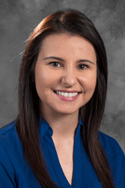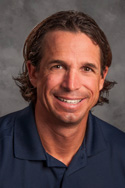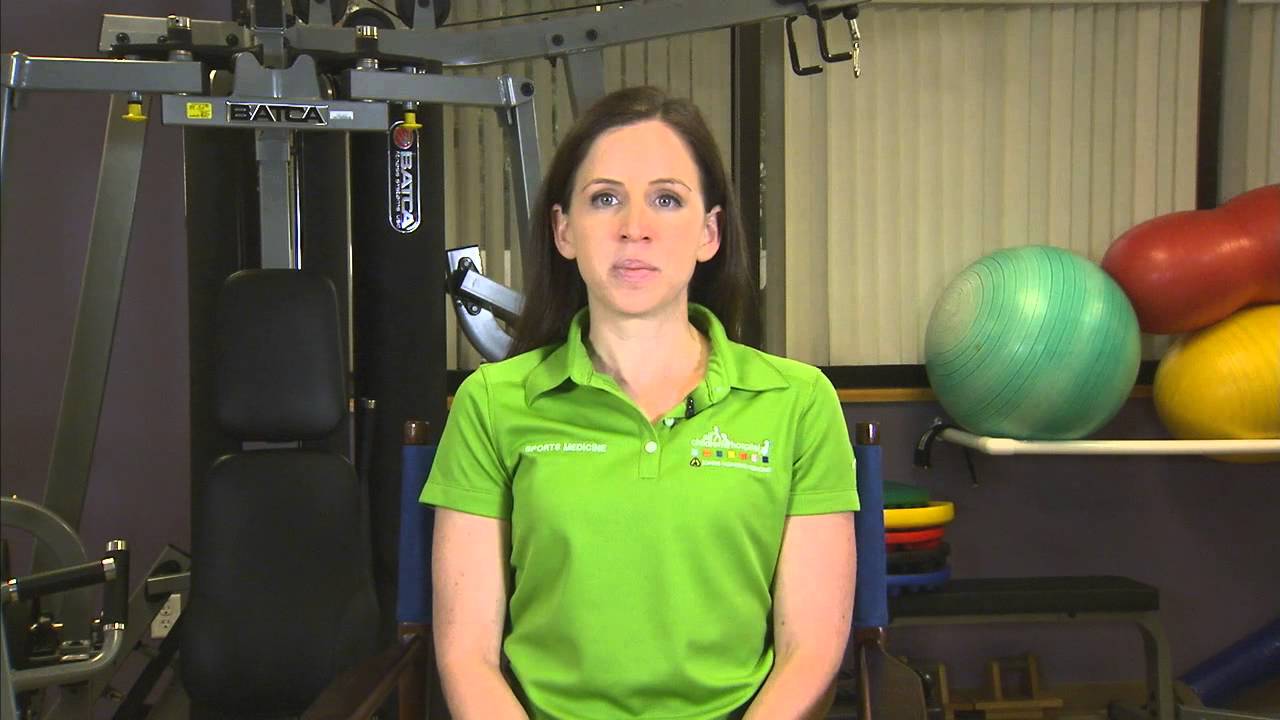Physical Therapy for Osgood-Schlatter
Osgood-Schlatter
Heather Neefe, PT explains what Osgood-Schlatter is and how it occurs.
What is it and how does it occur?
- Osgood-Schlatter's lesion involves pain and swelling in the small bump on the bone in your shin (tibia) just below the kneecap, and affects the area where bone growth occurs. Too much stress on the growing bone causes pain and swelling. This pain is often worsened with activity and eased by rest.
- The main cause of Osgood-Schlatter lesion is too much tension on the patellar tendon. The tension can occur from overuse from sports, growth spurts, or abnormal alignment in the legs. During sporting activities, the quadriceps muscle on the front of the thigh works, pulling on the patellar tendon, which in turns pulls on the tibial tuberosity. If this tension is too great or occurs too often while the bone is developing, it can pull on the growth area of the tibial. During growth spurts, the tendon may not be able to keep up the rate of bone growth in your lower leg and may become too short. For abnormal alignment, kids who are knock-kneed or flat-footed change the angle formed between the quadriceps muscle and the patellar tendon. This angle puts more tension on the growth plate of the tibial tuberosity, increasing the chances of developing Osgood-Schlatter's.
What can physical therapy do for this problem?
- The first thing that physical therapists address is to ease the symptoms. We may use ice, heat, ultrasound, or electrical stimulation to help control inflammation and pain
- Next, we work on flexibility, strength, and proprioceptive exercises for f all the leg muscles. Many times, tight hamstrings and quadriceps put an athlete at risk for developing different injuries, so maintaining overall good flexibility is important. We strengthen muscles of the lower leg and core to make sure the athlete has good muscle balance in the knee, hip, ankle, and core. Balance activities also help teach the athlete to learn where their body is in space and to use all different leg muscles together as a team
- Postural education and exercises are also important in order to address any abnormal alignment that is found. Sometimes, orthotics, or shoe inserts, are needed to help correct flat footedness or knock-kneed positions
- Finally, once symptoms have decreased, therapists work on sport specific activities and movement patterns, in order to help improve form and reduce knee strain during sports
- Physical therapy at the Johns Hopkins All Children's Sports Medicine program is provided in an atmosphere developed for teen athletes with a one to one ratio for the highest quality of care needed for maximum outcomes and return to play. Physical therapy will get you back in the game!
Osgood-Schlatter disease is a common cause of knee pain in growing teens and pre-teens. This condition often occurs in athletes who play soccer, basketball or other sports that require sudden change of movement and jumping. It affects nearly 20% of athletes during the rapid growth phase of puberty.
Symptoms
Typically, the pain and swelling is below the kneecap at the top of the leg bone. It can worsen with activities, especially running, jumping, squatting and kneeling. Many times the child has tight muscles, especially the quadriceps, hip flexors and hamstrings.
Too much stress on the growing bone causes pain and swelling. Tension can occur from overuse from sports, growth spurts, or abnormal alignment in the legs. Every child is different and the symptoms can vary in severity. Some children have mild pain only with activities. Others can have significant constant pain that interferes with standing and walking.
Diagnosis
Multiple different issues can cause knee pain so it is a good idea to have a physician examination. Our sports medicine physicians can provide an evaluation to determine if knee pain is cause by Osgood-Schlatter or something more serious.
Treatment
The best treatment for Osgood-Schlatter is rest during periods of inflammation and icing the affected area immediately after activity. Some athletes may need to reduce the frequency, intensity or volume of training or take a complete rest for a short period. Additionally, if the knees tend to get bumped, such as in wrestling or soccer, kneepads can be used to protect the area.
A physical therapist can help athletes with Osgood-Schlatter increase strength in their leg muscles and overall flexibility. Once symptoms have decreased, therapists work on sport specific activities and movement patterns, in order to help improve form and reduce knee strain during sports
More Information
Pediatric Sports Medicine
- Learn more about the Johns Hopkins All Children's Sports Medicine program.
Request a Consultation
If you’re concerned your child may have Osgood-Schlatter, call 727-76SPORT to schedule an appointment or request an appointment online with our Sports Medicine physicians, who will determine a diagnosis and recommend further treatment.Meet Our Team
Sarah Irani, MD

Patrick Mularoni, MD

Contact Us
For more information about the Sports Medicine program, give us a call at the phone number below. We serve families in the greater Tampa Bay area and beyond.[No text in field]
Give us a call
We know you want what's best for your child. We're ready to assist you with your questions. Call 727-76SPORT.
Request an Appointment
Complete our online form and our team will reach out to you shortly.



